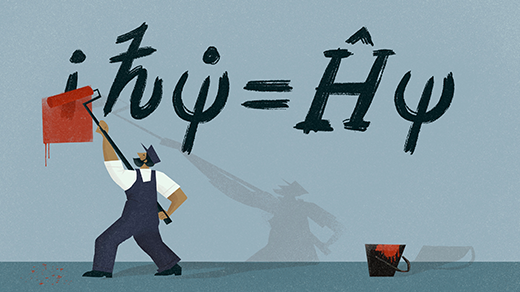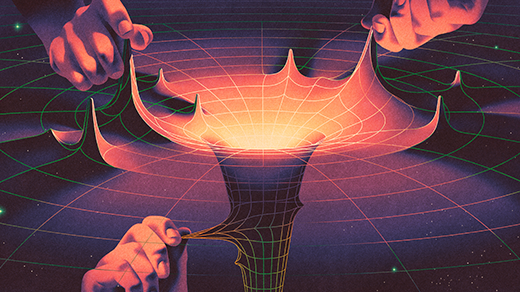What's up in
Mathematical physics
Latest Articles
Physicists Take the Imaginary Numbers Out of Quantum Mechanics
Quantum mechanics has at last been formulated exclusively with real numbers, bringing a mathematical puzzle at the heart of the theory into a new era of inquiry.
The Hidden Math of Ocean Waves Crashes Into View
The math of even the simplest ocean waves is notoriously uncooperative. A team of Italian mathematicians has made major advances toward understanding it.
Origami Patterns Solve a Major Physics Riddle
The amplituhedron, a shape at the heart of particle physics, appears to be deeply connected to the mathematics of paper folding.
‘Ten Martini’ Proof Uses Number Theory To Explain Quantum Fractals
The proof, known to be so hard that a mathematician once offered 10 martinis to whoever could figure it out, connects quantum mechanics to infinitely intricate mathematical structures.
New Physics-Inspired Proof Probes the Borders of Disorder
For decades, mathematicians have struggled to understand matrices that reflect both order and randomness, like those that model semiconductors. A new method could change that.
A New Geometry for Einstein’s Theory of Relativity
A team of mathematicians based in Vienna is developing tools to extend the scope of general relativity.
Epic Effort to Ground Physics in Math Opens Up the Secrets of Time
By mathematically proving how individual molecules create the complex motion of fluids, three mathematicians have illuminated why time can’t flow in reverse.
New ‘Superdiffusion’ Proof Probes the Mysterious Math of Turbulence
Turbulence is a notoriously difficult phenomenon to study. Mathematicians are now starting to untangle it at its smallest scales.
How Did Geometry Create Modern Physics?
Geometry may have its origins thousands of years ago in ancient land surveying, but it has also had a surprising impact on modern physics. In the latest episode of The Joy of Why, Yang-Hui He explores geometry’s evolution and its future potential through AI.








